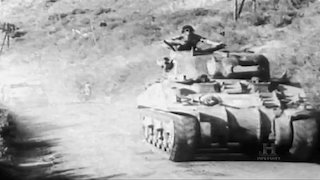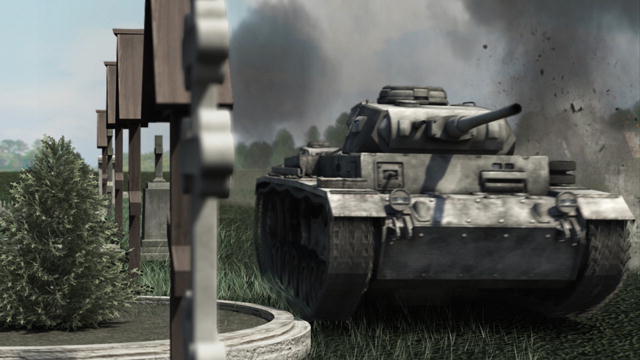
Machine guns were also used in novel ways. Though machine guns had evolved considerably, more important was their widespread availability, which contributed to the stalemate of the trench warfare on the Western Front. Like the submarine, the machine gun had existed for decades before the war. When combined with the development of the hydrostatically triggered depth charge, this allowed the Allies to detect, locate, and destroy submerged German submarines. The German submarine stranglehold was not broken until the adoption of a technology invented earlier for civilian use: the hydrophone.

Early Allied attempts to overcome Germany’s advantage in underwater operations were reminiscent of old military concepts: ramming, for example, was considered a tactic of choice early on. Although the submarine was not a German invention and even predated the war by a half-century (or more if you count prototypes and rare curiosities), it is one of the technologies most closely identified with the war. It also epitomized one of the war’s most famous technologies: the submarine. The sinking in May 1915 of the British ocean liner Lusitania - resulting in the deaths of more than a thousand passengers, over one hundred of them American citizens - is remembered now as the event that began the chipping away of anti-war sentiment in the United States. George Grantham Bain Collection (Library of Congress) U-20, the German submarine that sank Lusitania in May 1915, pictured in late 1916 after she was grounded on the Danish coast and destroyed by her crew.

An exhaustive catalogue of wartime technology is beyond the scope of this essay, but a brief survey will suffice to show that the war did not cause the invention, as such, of many of its best-known technologies. The many technological innovations most prominently associated with World War I may be grouped into three categories: first, weapons technologies invented for, or in most cases improved upon or scaled specifically for, warfighting second, medical innovations occasioned by the war’s traumas and third, non-weapons technologies catalyzed by or commercialized because of the war more generally. It is to these wartime advances that we first turn, offering a slight but necessary corrective to the way that the interaction of war and technological progress is usually depicted. To be sure, the myriad technological advances associated with the First World War are an important part of this story, even if such advances are too often thought of as taking place in the vacuum of war. Crucial to these changes were the twin goals of integrating science into industrial research and the transformation of academic science into a professionalized discipline deserving large-scale political and financial support. Little, who championed the idea of industrial research, which would come to play a key role not just in advancing corporate competitiveness but also in the new technologies of warfare and the astronomer George Ellery Hale, who successfully campaigned to create the National Research Council, thereby elevating the authority of science as an enterprise vital to the public good. In telling this story, we will focus on two integral American figures: the chemist and chemical engineer Arthur D. In the United States especially, the war helped assemble the loosely connected elements of technology, industry, academic science, and government into the first glimmerings of what President Eisenhower would later dub the “military-industrial complex.”

As we shall see, the greatest invention of World War I was not so much any particular machine but the war machine itself. In this sense, World War I was not the mother of invention.īut the war was a turning point in another far less understood way. Nor did the war effort engender many truly transformative technological innovations, even those for which the war is most famous. Rather, they were modifications of existing civilian technologies developed during peacetime. With a few notable exceptions, most of the iconic technologies of the First World War were not in fact invented during or because of the war. However, the centenary of the Great War provides an occasion to explore the ways in which the truth is rather subtler than the conventional wisdom. It is not altogether wrong to think of it as the “chemists’ war” or the “engineers’ war,” as it is sometimes labeled. The First World War in particular is often taken to be a hinge in technological history - the war in which horses were widely used for the last time and weapons of mass destruction were deployed for the first time. War has “always been the mother of invention,” wrote the historian A. J. P.


 0 kommentar(er)
0 kommentar(er)
